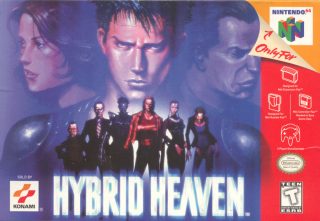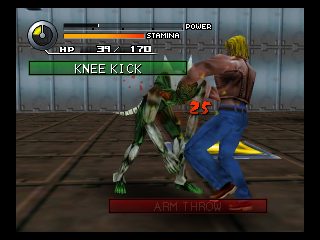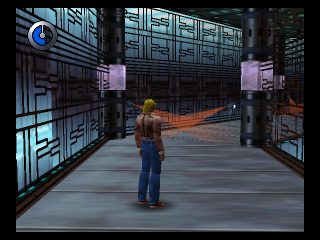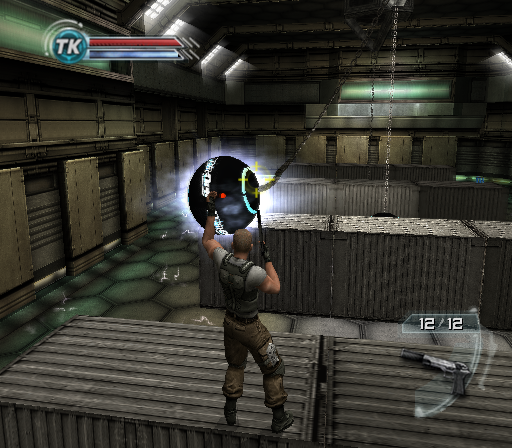MISSING SOME PICS, CHECK TAGS
The N64 is one of the strangest mainstream consoles to ever exist. Regarded in retrospect as a veritable black sheep in Nintendo’s release history, it was eclipsed by the Sony PlayStation in quality and quantity of titles, and it still used cartridges while the PlayStation and Sega Saturn had switched to compact discs, leading to considerable technical limitations that cause most games to look dated by today’s standards. In spite of its problems, it at least survived thanks to its first and second-party games, boasting three of the highest-selling games in history: Super Mario 64, Goldeneye 007, and Legend of Zelda: Ocarina of Time. Meanwhile, third-party companies mostly jumped ship to the PlayStation, including Konami, a longtime golden child of Nintendo’s during the NES and SNES eras. Konami made some of their greatest hits for the PS1, including Castlevania: Symphony of the Night, Suikoden, Silent Hill, and the big enchilada in Metal Gear Solid. They did not completely abandon the N64, but with most of their titles remaining Japan only (like most of the Pro Yakyuu baseball series) and their most prolific releases being the controversial Castlevania 64 titles, it was clear they were playing favorites against Nintendo’s will. Still, they at least made two fine Goemon games that somehow got overseas releases, and one other game that achieved mild recognition and was never spoken of again. This game, Hybrid Heaven, may qualify for the most unique and/or bizarre N64 game in the system’s tumultuous history.
Hybrid Heaven is about the Hybrids, a genetic alien/human fusion race operating in a giant facility under the Earth’s crust. They intend to pull the ol’ Invasion of the Body Snatchers gig and take over the world by replacing political leaders with their own copies. The game starts out in the living quarters of Johnny Slater, Secret Service agent, who stands completely naked at the door while his superior officer gives him a mission briefing. One look at Johnny’s polygonal butt tells you that you’ll be in for a ride. Cut to a subway station where Johnny is fatally shot by Diaz, one of the Hybrids, who then goes on to sabotage his base and attempts to escape. Except that “Diaz” is the real Johnny Slater, he killed an evil Hybrid clone of himself, and the underground facility is really a long-dormant spaceship. Johnny has been under the guiding influence of the Gargatuans, a benevolent race of extraterrestrials who task Johnny with rescuing their super-powered Navigator and foiling the Gargatuan traitor who created the Hybrid race for starters. He also has to deal with the Hybrid chiefs and the actual Diaz, who isn’t at all happy with Johnny for masquerading as him. All this and Johnny has to make it to the giant Christmas tree in time to meet his girlfriend.
As you can likely assume from the above, the plot is absolutely ridiculous and stupid, but the game gets points for at least attempting to keep a consistent narrative. It’s on par with the later Metal Gear games in terms of unbelievable silliness, albeit without hour-long cutscenes. The plot is entertaining on the basis of its humorous dumbness, but it’s all essentially window dressing for the real meat of Hybrid Heaven: Beating the crap out of aliens in no-holds-barred turn-based mixed-martial-arts battles.
Wait, what?
Hybrid Heaven is an appropriately named game, not only to describe the Hybrids of the story, but also a fitting descriptor of its attempt to fuse together several types of gameplay into its own hybrid genre. While the results aren’t always successful, it does end up as one of the most original games on any system, let alone the N64. What other company besides Konami (back before they changed their logo and lowered in quality) could boast an action-RPG with turn-based unarmed combat and an experience system interspersed with Tomb Raider-esque third-person shooting segments? This was doubly impressive on the N64, a system which was severely impoverished in RPGs and fighters.
After the intro cutscene, you set out to explore the hybrid facility as “Mr. Diaz,” though you’re only Diaz for the first two areas. You lose your Diaz coating two areas in and play the rest of the game out as Johnny Slater, but the differences are merely cosmetic. Hybrid Heaven is more linear than other RPGs and is divided into nine areas, which you can each explore until you reach the stage’s end. There’s one level you can’t really take the time to examine (the second one, specifically), but there’s not a lot to really find except for some additional items. Still, those items can add up if you hoard them and most of them become useful later on in the game. Above all, what you really want to keep your eye out for are save stations which instantly recover your life and log your progress. They’re somewhat spread out over long stretches with several battles in between them, and while it sucks to lose your progress, the overall game’s only about twelve to fourteen hours long on average.
Hybrid Heaven is not one of the lengthiest RPG-type games, but it is definitely one of the most innovative. Outside of battles, the game plays as a third-person action game where you wander around the underground complex while avoiding robotic sentries. You can run and jump, and you have a laser gun called a “diffuser” which you can use to shoot at mechanical enemies, but you must stand still to aim. Robots come in several varieties like floating laser-armed sentries, small explosive ground skimmers, and stationary missile pods. Some of them drop items after being destroyed, and they don’t generally do too much damage, though if you’re weak from an earlier battle, they just might be able to finish you off. You can die from these mechanical hazards, and you’ll lose instantly if you fall down a pit, but the main jeopardy comes from the violent freakish inhabitants strewn about the underground complex that want nothing more than to beat the snot out of you.
The real meat of Hybrid Heaven is in its fights, wherein Johnny puts his combat abilities to the test against a wide variety of freakish mutants. There are over twenty-five different types of enemies available for your brawling pleasure/agony, and they get progressively tougher the farther in you travel. You start with basic enemies like Spica, a blue hook-armed insectoid, and Pollux, a humanoid blood clot who mostly kicks at you. You’ll fight some clone humans and Men in Black who employ dirty tactics like using life refreshers and shooting at you when you’re far away. The first truly scary enemy is the Murphrid, a tall horse-like organism which employs crushing throws to drain your life ASAP. Later on, you fight bipedal robots and even weirder aliens, some of which can sap your life by poisoning you, and others of which have freezing attacks that lower your defenses for several seconds. There’s overall a good variety of enemies and some act noticeably differently from each other; some will hang back and build up their strength, while others just get in your face and attempt a nonstop assault. Most of them are fought in increasing order of difficulty, though a few seem strong enough to be bosses when you fight them like the aforementioned Murphrids and Gacrux, a hulking rocky rhino Hybrid with ungodly power and speed. Still, HH isn’t too challenging once you get the knack for fights.
When combat begins, your Power gauge builds up as you stand and move forward, and it moves slower if you step backwards or run around the arena. When your Power gauge builds up enough to go from red to green, you can attack the enemy, though it’s advisable to let it fill up completely for a more powerful attack. When you press the A button, you bring up a window that allows you to either attack or use items (more on those in a bit). For attacks, you either have punches or kicks assigned to each limb, with the general rule of punches being faster and kicks being stronger. If you press the R button, you’ll actually attempt to grab the opponent, and bringing up the attack commands replace your punches and kicks with “Technique,” allowing you to perform a variety of crushing throws. You can even move behind an enemy while grabbing them by double-tapping the control stick left or right, allowing you to perform some different throws, or you can even attack the enemy while they’re down. You can make your limbs, body, or head stronger by using attacks that involve them, and you can choose whether you want to focus mostly on punching, kicking, or grabbing, though keep in mind some enemies can’t be grabbed. You don’t have a massive amount of moves to start, but if an enemy performs an attack on you that’s not in your repertoire, there’s a chance that you’ll learn that attack for your own use. You’re not guaranteed to learn every new attack, and you can never learn “special” attacks which only certain enemies use, often supernatural abilities beyond what Johnny can emulate. Still, if you’re looking to earn new moves, you’ll have to wait for enemies to beat you up a bit, which also increases the defensive abilities of whatever body part is hit.
When the enemy attempts to attack you, you’re given three options: Guard (reduce damage, best chance of working), Step (attempt to avoid, full damage if fails) or Counter (deal damage in return, also full contact on failure). The options change slightly if the enemy attempts to hit you with a grab attack, even if they’re similar to the options against strikes: Take Fall (Guard), Escape (Step) or Reversal (Counter). If attacked while down, you can either try to Roll away or attempt to Counter the opponent. Sometimes, you’ll get hit no matter what you do, which is why it’s useful to have items on hand for tougher fights. Items range from your basic life and stamina chargers to very rare permanent stat boosters, and you can even pick up one-use guns that can deal damage from afar, even if these are impractical in most situations. Tougher battles may warrant the use of devices which either boost your own offense, defense, or speed, or deprive your enemy of these statistics. The game inundates you with life chargers throughout the game, so later battles don’t become too fearsome when you have recovery items to rely on, but getting stunned by an opponent (by taking too much head damage) could potentially ruin your progress.
Still, you get stronger if you fight enough battles, and earlier levels have infinitely respawning monsters in case you want to grind. Power-leveling usually isn’t necessary, as you’ll get naturally hardy with most of the encounters on the way. Once you’ve fought enough battles, you’ll gain a combo meter that gets stocked up for each full power bar. You can build your combo gauge up to five bars, and you can perform two-to-five hit combos which deal immense damage to enemies. You can pick preset combos or cobble your own from available punches and kicks, with a few special five-hit combinations resulting in a sixth hit finisher. Battles usually get easier once you become comfortable with what attacks work and what don’t, but despite all the various types of techniques you can learn, you’ll likely never use them all in battle regularly. The basic punches and kicks you start out with will suffice throughout the entire adventure, and there are really only a few throws worth learning; specifically, grab attacks that cause head damage (Headcrush, Piledriver, Head Butt) will cause the enemy to pass out and be left vulnerable to ground attacks against which they can do nothing.
As in any game emphasizing combat, there are quite a few bosses to fight, most of which are standard battles against tougher enemies which often employ unfair special attacks. Some will breathe fire or ice breath on you, some will shoot if you get too far away, others will use offense and defense boosters (though even some normal enemies can do that), and they’ll even use life chargers that restore their whole health if you don’t kill them quickly. There are even a few boss encounters which are not fought in a straight fight, such as the giant Giger-esque monstrosity that you battle throughout the entire second stage. There’s also a horribly misplaced giant robot boss which fires out lasers and bullets like a boss from a Cave shoot-em-up, but all you have to fight it is your wimpy diffuser pistol, and you can’t really roll out of the way of its oncoming assault. Arguably worse is the return of the stage two monster who comes with a twin that spits fireballs, and you have to somehow run around and maneuver these monsters into their own death while dealing with the worst camera ever. These particular “fights” are interesting concepts, but they’re pretty frustrating in practice, yet they’re thankfully uncommon.
Despite attempting to shake things up, these special fights really irritate more than anything; in fact, most of the non-fight parts are pretty annoying due to your stiff movement. It’s not quite at “tank control” levels of awkward, but Johnny isn’t the most maneuverable 3D protagonist. When you’re not running about, the main combat’s pretty fun when you get the knack for it, but it can get a bit boring to play the game in long bursts and fight similar enemies repeatedly. The later levels throw lots of various Hybrids at you, but the earlier stages, particularly the fourth area with its many robots, get a bit tiresome if played for too long. That said, it’s not too much of the same that’s the game’s biggest problem. That which is Hybrid Heaven‘s greatest strength – its originality – is also its greatest flaw. It could be said that HH cannot make up its mind as to what it wants to be, and it could have been better off if it was entirely an RPG, a beat-em-up, or a third-person shooter instead of a clumsy crossbreed between the three. If it were more an RPG, it could flesh out its experience system and give you actual equipment, and if it were more of an action game, it would improve the combat to make it flow faster and feel more organic. However, the game would possibly not be as memorable if it were a singular genre, and HH at least gets effort for attempting to find a medium between three tastes akin to chocolate, grapes, and meatloaf.
The game also gets kudos for its technical prowess; the graphics are, by N64 definitions, technically sound and crisp, further polished with use of the Expansion Pak peripheral. It doesn’t suffer as badly from the infamous “fog” effect of most other action/adventure games, and it’s one of the very few N64 titles to boast widescreen support. Characters’ faces actually animate when they talk and they aren’t animated too shabbily either, and the actual designs of Hybrids themselves are strangely appealing in a bizarre perverted sense. On the flipside, the major graphical weakness is in the backgrounds, all of which are dull metal corridors in different shades of gray and whatever lighting illuminates them. While it’s consistent with the whole “underground spaceship” backdrop, they could have at least had some areas with different terrain to spice things up. The similar-looking hallways can make it confusing to navigate less linear areas, a problem further compounded by what is probably the worst automap of all time. It’s featureless, vague, does not adequately account for different floors, and you can’t even get a fullscreen version of it. There’s nothing too complex that’ll leave you stuck for hours wandering around like an idiot, but in spite of the backgrounds’ redundancy, they at least do a good job of making you feel as if you’re alone in a massive alien complex: cold, mechanical, and intimidating. The repetitive textures are a necessary evil to convey an ambience unlike anything from any other game.
The sound design is an odd duck, as it’s simultaneously impressive yet ambient. Most of the music that plays outside of battles isn’t really memorable, but it’s not bad per se. It does often fit the atmosphere of wandering around hostile halls of the Hybrid menace, and it gradually increases in intensity the farther into the game you travel. A nice touch is that as you explore more sectors of an area, the tempo and rhythm of the track remain intact while new instruments gradually chime in or old ones are taken away. The really prominent uptempo stuff is saved for the fight music, and the most common composition is a damn good fight theme that really encapsulates the danger of a hulking mutant attempting to cave your head in. To bring up Metal Gear again, it wouldn’t be out of place as a theme that blares if Snake gets sighted by the enemy. As much as the fight theme plays, it never quite wears out its welcome, though there is also a different boss theme for the bigger fights that’s even faster and more epic, almost resembling something from Chrono Trigger or another more typical RPG. There are even a few special tracks which play on some battles near the end of the game which are particularly impressive, except perhaps for the final boss theme which loops over every twenty seconds.
Once you’ve beaten the main game and are looking for more Hybrid havoc, there’s a “Battle Mode” that cuts out the story and focuses exclusively on the combat. It features a Versus mode that allows you to pit your combat skills against a human opponent, an interesting concept which is quite weird in practice. The combat system has been altered to be less real-timey, as it wouldn’t be any fun if your enemy could easily predict your moves while having time to think about their next actions. Thus, quick commands are mapped out to the C-buttons, and different strikes and throws are performed by pressing the C-buttons together in various ways. It’s hard not to think of if the main game would have been better or worse if it had included this combat control instead of the turn-based menu fighting, but perhaps the least they could have done is offer it as an alternate option. There’s also a “Creature Battle” which is a more standard survival mode, where you can fight a quick round against five Hybrids back-to-back or take on every single enemy in the game, at least up to the different types you’ve fought so far on your corresponding save file. You can actually gain levels in these segments and return to the main game after having beefed up against the gauntlet, even if you lose at any point.
Quite a lot has been said about Hybrid Heaven, and it deserves so much explanation because there really is no other game like it, for better or worse. The only other title possibly akin to it in terms of terrain exploration and semi-active combat is Vagrant Story, but even that’s a stretch. HH comes from that bizarre era of late-nineties video gaming where most game companies were sitting high and mighty on their profits, and they could afford to take risks with experimental titles to see what stuck and what was junk. HH arguably falls into the latter category of games that didn’t quite take, but the very least that could be said for it is that the developers tried. Its biggest failing is that it attempts to cram too many outlandish concepts into one cartridge, and as a result of trying too hard, it’s tough to shake the feeling that it’s full of ideas it never fully realizes. Still, even if the end result is a bit limp in some ways, it’s not a bad game; its unique premise is what saves it from mediocrity. The combat is enjoyable once you get used to it, the atmosphere is impressive, and the hilariously daft plot alone is worth the price of admission for anyone who thought Konami’s stories couldn’t get any more ridiculous than the Metal Gear series. Sometimes, a game demands accolades for having attempted to do something incredible, rather than doing something incredibly well. Hybrid Heaven stands out less for how it plays and more for what it is: A noble effort to bring the mediums of physical brawling and statistical role-playing closer to each other in a science-fiction yarn about one man whomping on test tube aliens. It doesn’t get much more mind-numbingly memorable than that.
Links:
Game Club 199X Episode 12 Our podcast about the experience of playing Hybrid Heaven.
IGN Interview with director Yasuo Daikai prior to the game’s release.
Unseen64 Images and videos of early development.




